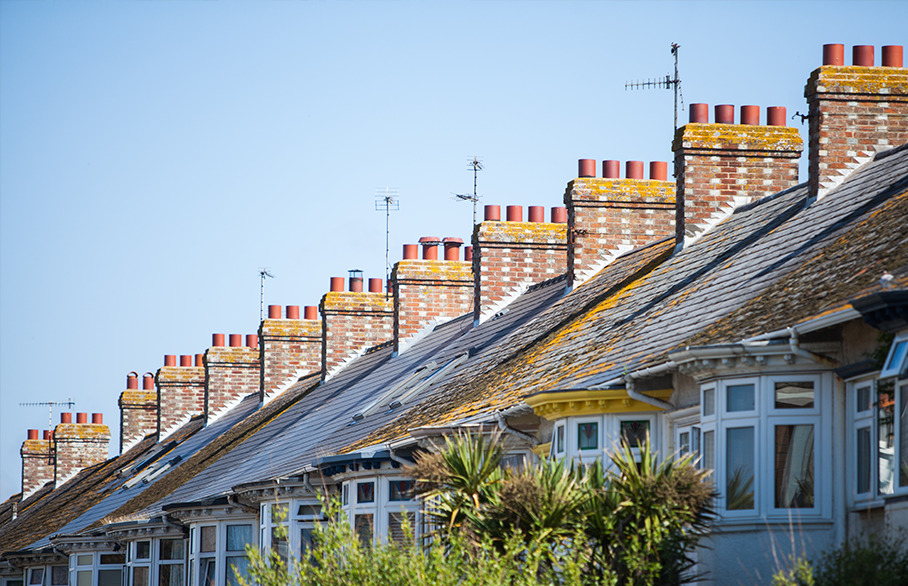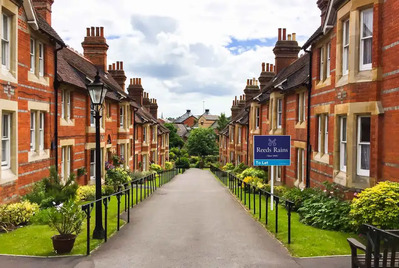
For many landlords, especially those investing for the first time, the biggest question is how to identify the right property: what should they buy and where?
There are properties being successfully let all across the UK, with many delivering good returns for landlords.
However, the cost of letting legally and maintaining a property or portfolio has never been higher, and with average mortgage interest rates currently at a relatively high level – certainly compared with the decade prior to the pandemic – there are also a lot of landlords who are finding it hard to turn a profit.
In some cases, landlords are struggling because when they ‘stress tested’ their figures before investing they may not have included mortgages rates returning to their long term 5-7%.
But in other cases, they simply bought the wrong thing because they weren’t familiar enough with the local area.
The desirability of a property can vary significantly from one street to another and the demand from tenants can be highly dependent on what’s within easy striking distance.
There will also be trends and local changes over time, which can mean a location that’s popular today won’t necessarily grow well in value or be able to attract a good market rent a few years down the line.
So it’s critical to carry out research before you invest, to determine whether the area you’re buying in is likely to support a strong rental market not only now, but into the future.
If you’re considering investing into Buy to Let, or you’re thinking of expanding your portfolio and wondering whether to branch out into a different area, here are some key things to know and consider.
The issues with ‘hotspots’
The most important thing to know is there are good deals to be found all over the country, so there’s really no reason to chase potential returns in a town or city you are not familiar with, which may be a long way from where you live.
The second thing to be aware of is that hotspots change, precisely because the ‘heat’ is generally short-term, driven by new businesses moving into the area and an injection of investment in housing and infrastructure.
What’s most important for success in Buy to Let is a consistently good performance over the medium to long term, and it can be more risky to invest in a place where a strong lettings market hasn’t yet been established.
And, finally, by the time the media has declared an area to be a hotspot, regeneration is often well underway and the best investment returns - certainly in terms of capital growth – may well already have been made by early adopters.
Invest locally
It’s very helpful if your investment property is within striking distance of where you live. If you’ve lived in the same place yourself for a while, you’ll probably have a feel for the local market.
You’ll be aware if certain streets or neighbourhoods have good or bad reputations, and you might even have a feel for property prices.
All of that should make it much easier to choose a property, rather than investing somewhere you don’t know well or possibly have never been before.
Speak to local property experts
Established local sales and lettings agents like Reeds Rains will have seen how different types of rental property in different locations have performed over time.
They’ll also be aware of things like upcoming housing developments and planned infrastructure changes, which can significantly affect supply and demand in specific spots.
At Reeds Rains, we’re always here to help landlords with any aspect of buying and letting property, so please do get in touch with us to discuss your investment plans.
We can then help you identify the areas and types of property that are most likely to deliver on your goals. You can find the details for your local branch here.
Check local council plans
Your local council planning department may have a portal online where you can find information on what’s in the pipeline for the next 5-10 years, in terms of new housebuilding and infrastructure improvements.
If there is going to be future investment, that suggests a healthy and expanding local economy, which is a good indicator that rental demand and prices are likely to rise.
And if there are new housing projects, you can discuss with local agents what kind of impact they expect that to have – good and bad – on the surrounding areas.
Find out about local council licensing schemes and planning
In England, every local authority has the power to introduce selective licensing schemes that can require any privately rented property in a certain area to be licensed – and the scheme could apply to anything from part of one particular street to the whole council area.
It’s also important to be aware that these licensing schemes can apply to all rented properties, even a one bed flat.
If you’re considering investing in Houses in Multipl Occupations (HMOs), you need to know that the council can also expand mandatory licensing to smaller multi-let properties and may require you to apply for planning permission for change of use.
Under these powers, a council could decide that there are too many rented properties in one area and refuse to issue a licence, or they might limit the number of tenants you can house.
All these things could seriously impact the profitability of your Buy to Let, so you must find out what your local authority’s policies are before you invest, or else you could end up out of pocket.
Carry out your own price research online
Even if you’ve taken advice from property agents, carry out some online research to make sure you really understand the market.
In terms of house prices, Reeds Rains sold house prices and the Land Registry all have online search functions that let you see house prices over time, and with the Land Registry, you can refine your search to a particular type of property within a specific postcode.
It’s also worth looking at what’s currently for rent in the area where you’re considering investing and tracking how quickly those properties let.
Once you know the capital growth and rental income levels that certain properties in certain areas can achieve, and you have an idea of the probable future supply and demand, you can then decide what’s most likely to deliver on your own investment objectives.
Work with a local surveyor
When investing in a property it will cost not only a lot of money to buy and ensure the property is being legally and safely let, you will also need to maintain the property to a high standard into the future.
A local surveyor that can help identify likely maintenance costs and issues with a property’s condition can give invaluable insight into your current and future repair and any upgrade costs.
You might also be interested in our article, 'How to ensure your property delivers on your pension'.
If you would like to know more about the Buy to Let market in your local area or need help with any research, find your local branch details here and speak to one of the team.
Are you new to investing and looking for a rental property, or an existing landlord looking to expand your portfolio? Sign up for our investor newsletter to get the letting investment opportunities.
The Reeds Rains Content Marketing Team



